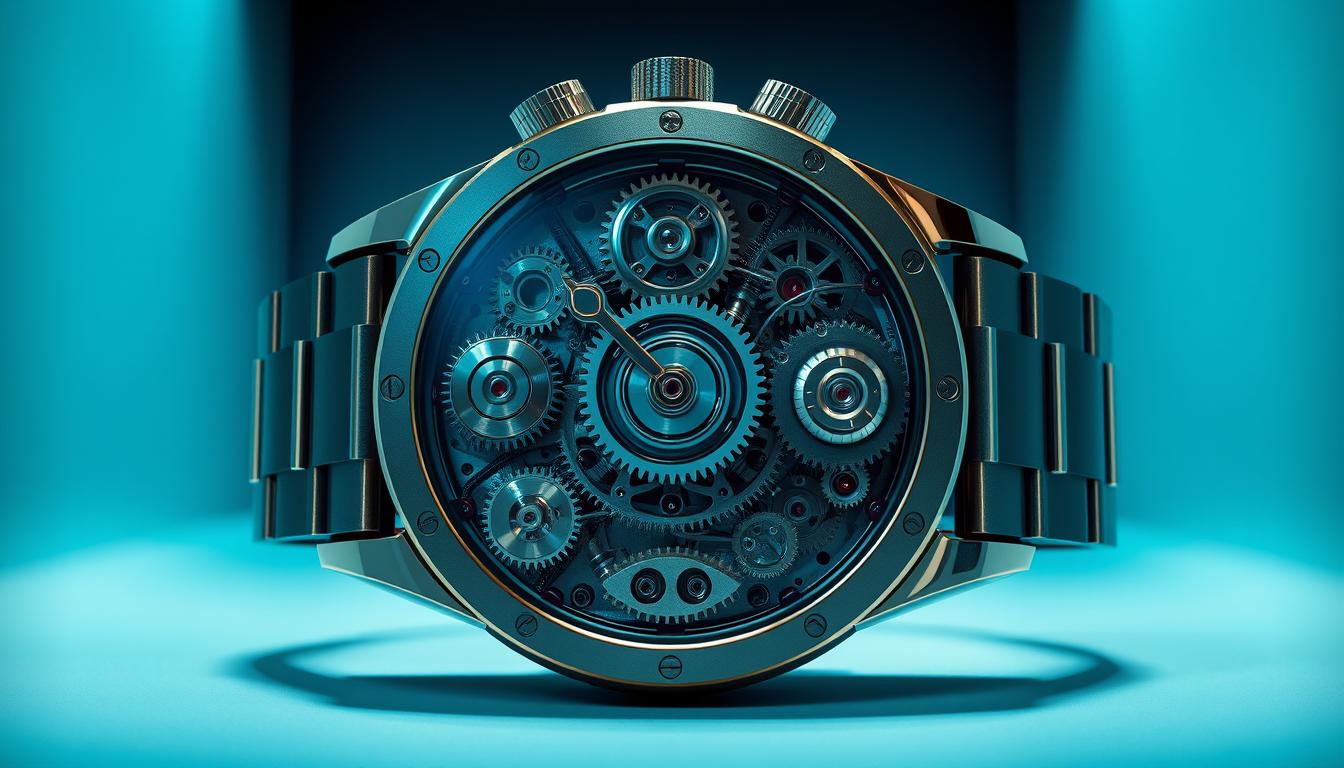Watches have long been a symbol of status, craftsmanship, and innovation. Today, the world of horology is experiencing a renaissance, driven by advancements in technology.
We’re witnessing a fascinating journey in watchmaking, from traditional mechanical timepieces to high-tech innovations that are redefining the industry.
At CoWrit Technologies Inc, we’re passionate about exploring how technology transforms traditional industries. The watch industry is a prime example, balancing traditional craftsmanship with revolutionary technologies to create timepieces that are both engineering marvels and works of art.
Key Takeaways
- The watch industry is undergoing a significant transformation driven by technological advancements.
- Traditional watchmaking techniques are being combined with modern innovations.
- The result is timepieces that are both functional and aesthetically pleasing.
- The industry is pushing the boundaries of what’s possible in watch design and functionality.
- CoWrit Technologies Inc is at the forefront of exploring the intersection of technology and traditional industries.
The Evolution of Watchmaking Technology
As we explore the evolution of watchmaking, it becomes clear that technological advancements have played a crucial role in shaping the industry. The journey of watchmaking technology is a fascinating story that spans centuries, from the early mechanical movements to the modern digital revolution.
From Mechanical Beginnings to Digital Revolution
The first portable watches emerged in the 16th century, powered by mechanical movements. These early timepieces were not only status symbols but also showcased the ingenuity of watchmakers. The introduction of the automatic movement in the 18th century was a significant leap forward, eliminating the need for daily winding. A major turning point came in 1969 when Seiko introduced the world’s first quartz wristwatch, revolutionizing timekeeping with its accuracy.
- The development of mechanical watches highlighted the craftsmanship and heritage of watchmaking.
- The quartz revolution democratized accurate timekeeping, making it accessible to a wider audience.
- Today, the watch industry continues to innovate, blending traditional craftsmanship with modern technology.
How Innovation Has Shaped Timekeeping Through Centuries
Each technological advancement in watch movements has not only improved timekeeping accuracy but also influenced watch design, accessibility, and cultural significance. For instance, the shift from mechanical to quartz technology had a profound impact on the industry, with many brands adapting to the change while others maintained their focus on mechanical movements. As we look at the history of watchmaking, it’s evident that innovation has been key to the industry’s survival and success. Readers interested in understanding the broader implications of technological innovation can find more insights in our guide on remote success in 2025.
Cutting-Edge Technology in Watchmaking: The Modern Renaissance
The fusion of traditional craftsmanship with modern technology is redefining the watchmaking landscape. We are witnessing a renaissance in watchmaking, driven by advancements in digital tools that enable unprecedented precision, complexity, and efficiency in both design and production.
Computer-Aided Design (CAD) Revolutionizing Watch Design
Computer-Aided Design (CAD) software has transformed the watch design process. With CAD, watchmakers can create intricate designs with perfect accuracy and simulate how components will interact before physical production begins. This not only streamlines the design process but also allows for the creation of complex designs that would be challenging to achieve manually.
For example, CAD enables the design of intricate watch parts with precise measurements, reducing the margin for error and enhancing overall quality.
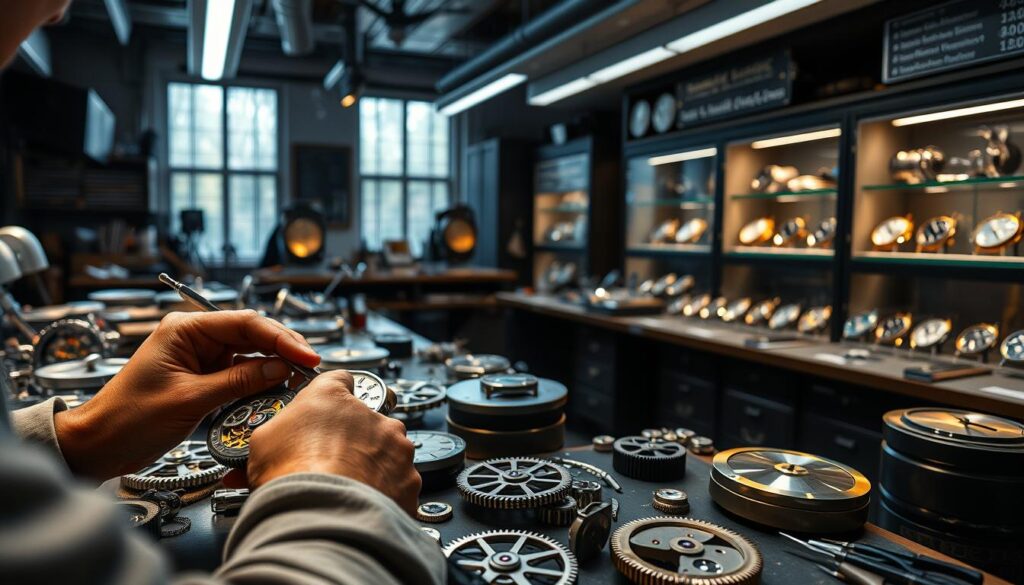
3D Printing and CNC Machining in Modern Production
The advent of 3D printing and CNC machining has revolutionized the production of watch components. These technologies allow for the creation of complex parts with high precision, enabling watchmakers to produce watches that are both aesthetically pleasing and mechanically sophisticated.
- 3D printing enables rapid prototyping and production of complex watch parts.
- CNC machining allows for the precise manufacturing of components, enhancing consistency and quality.
The Impact of Precision Engineering on Watchmaking
The integration of precision engineering technologies has significantly impacted watchmaking. By enabling the production of components with microscopic precision, these technologies have enhanced both the quality and consistency of watches. This precision is crucial in watchmaking, where even the smallest deviation can affect the timekeeping accuracy of a watch.
As a result, watchmakers can now push the boundaries of innovation, creating designs that were previously unimaginable. This blend of traditional craftsmanship and modern technology represents a new way of creating watches that honors heritage techniques while embracing technological advancement.
Smart Integration: How Digital Tech Meets Traditional Horology
The convergence of traditional watchmaking and digital technology has led to the emergence of smartwatches, offering a blend of style, functionality, and innovation. This integration has transformed the watch industry, creating new opportunities and challenges for both traditional watchmakers and technology companies.
The Rise of Smartwatches and Their Market Impact
Since the introduction of the Apple Watch in 2015, smartwatches have become increasingly popular, transforming the watch industry in various ways. Companies like Apple, Samsung, and Garmin have carved out significant spaces in the smartwatch market, offering a range of features that go beyond traditional timekeeping.
Smartwatches have not only expanded the definition of what a watch can be but have also created new categories of watch consumers. They have pushed traditional watchmakers to innovate and adapt to changing consumer preferences, forcing the industry to reconsider its approach to innovation.
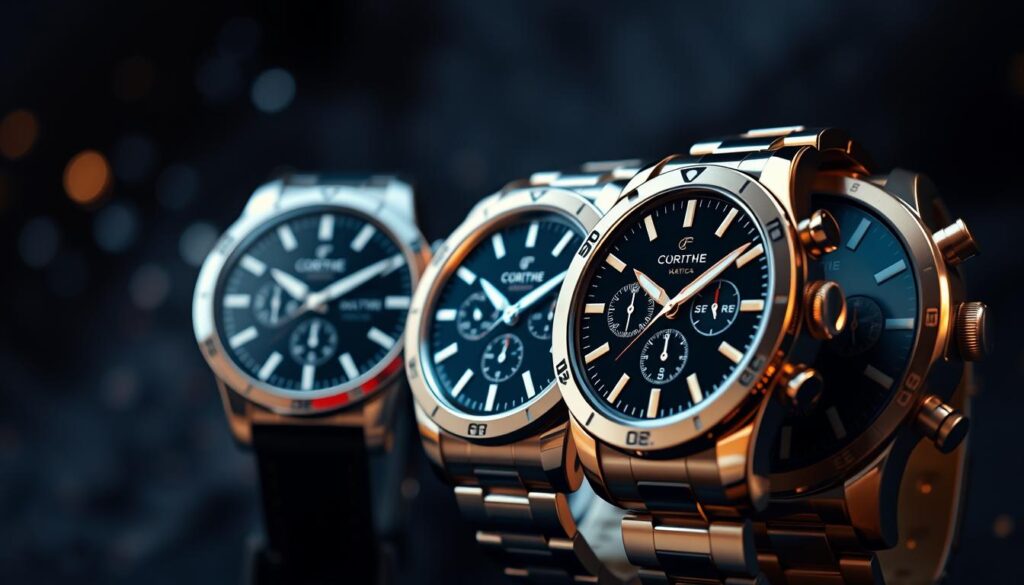
Hybrid Watches: Blending Traditional Craftsmanship with Smart Features
The emergence of hybrid watches represents a fascinating blend of tradition and technology, with brands creating timepieces that combine mechanical craftsmanship with smart functionalities. These watches appeal to both technology enthusiasts and traditional watch collectors, offering the best of both worlds.
Brands like Withings and Skagen have successfully navigated this integration, creating watches that are both stylish and functional. Hybrid watches have become increasingly popular, as they offer a compromise between traditional watchmaking and modern technology.
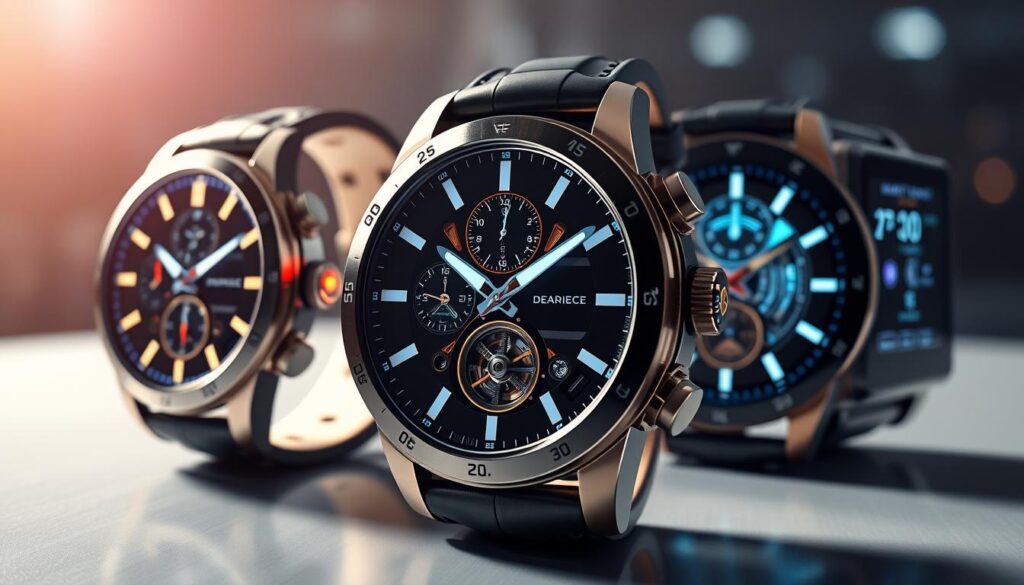
In conclusion, the integration of digital technology into traditional horology has revolutionized the watch industry, creating new opportunities and challenges. As the industry continues to evolve, it will be interesting to see how traditional watchmakers and technology companies adapt to changing consumer preferences and advancements in technology.
Revolutionary Materials Transforming Watch Design
Innovative materials are redefining the landscape of watch design, offering unprecedented durability and aesthetic appeal. Watchmakers have begun to experiment with novel materials, moving beyond traditional stainless steel to create timepieces that are not only robust but also visually striking.
The adoption of advanced materials like ceramic, titanium, and carbon fiber has been a game-changer in the industry. Ceramic watches, for instance, are becoming increasingly popular due to their lightweight nature, exceptional strength, and scratch resistance. Brands like Omega and IWC have embraced ceramic in their designs, creating watches that are both durable and elegant.
Ceramic, Titanium, and Carbon Fiber: The New Standards
Ceramic, titanium, and carbon fiber are setting new standards in watch design. Titanium is prized for its lightweight properties, corrosion resistance, and hypoallergenic qualities, making it ideal for sports and luxury watches. Carbon fiber, with its ultra-lightweight and high-strength characteristics, enables the creation of innovative designs that were previously impossible with traditional materials. Brands like Hublot have pioneered the use of carbon fiber in watchmaking.
| Material | Properties | Notable Brands |
|---|---|---|
| Ceramic | Lightweight, scratch-resistant, strong | Omega, IWC |
| Titanium | Lightweight, corrosion-resistant, hypoallergenic | Various luxury brands |
| Carbon Fiber | Ultra-lightweight, high-strength | Hublot |
How Advanced Materials Enhance Durability and Performance
The use of advanced materials significantly enhances the durability and performance of watches. These materials allow watchmakers to create larger watches that remain comfortable to wear, more durable timepieces that withstand rigorous use, and designs with unique visual signatures. As a result, the watch world is witnessing a shift towards more robust and aesthetically diverse timepieces.
As quoted by a prominent watchmaker,
“The innovation in materials is allowing us to push the boundaries of what’s possible in watch design, creating pieces that are not only functional but also works of art.”

The impact of these materials is not limited to luxury watches; the technologies and approaches pioneered in high-end timepieces are eventually making their way to more accessible watches, thereby influencing the broader watch world.
Innovative Movements and Mechanisms
The art of watchmaking is being redefined by innovative movements and mechanisms that blend tradition with modern technology. At the heart of this evolution are the intricate mechanical movements that continue to fascinate watch enthusiasts worldwide.
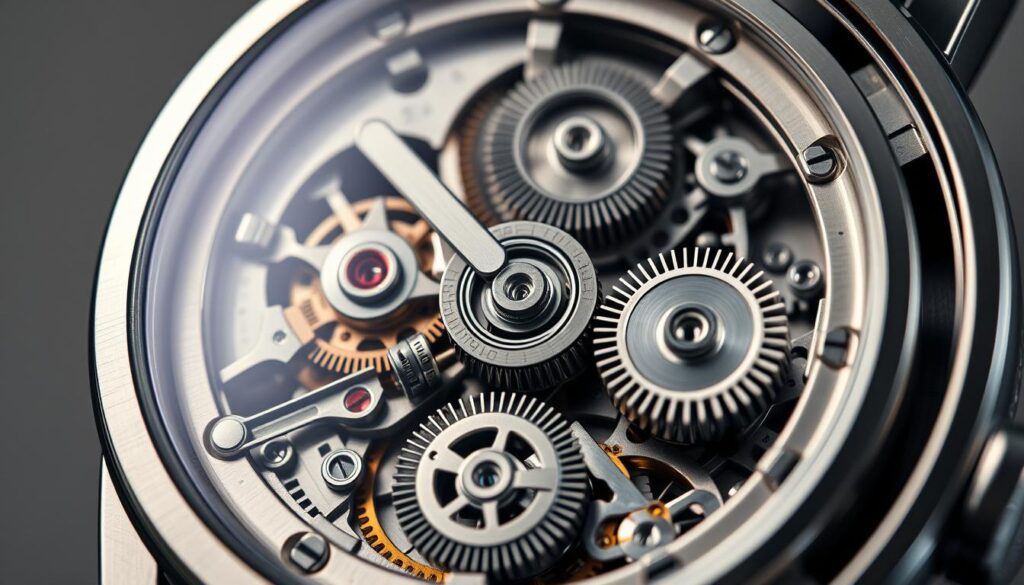
Beyond the Tourbillon: Cutting-Edge Mechanical Innovations
The tourbillon, invented by Abraham-Louis Breguet in 1795, is a testament to the ingenuity of watchmakers. It counters the effects of gravity on a watch’s accuracy by rotating the escapement. While modern watches no longer require this mechanism for accuracy, it remains a showcase of watchmaking prowess.
Beyond the tourbillon, contemporary mechanical innovations are pushing the boundaries of precision and craftsmanship. Modern advancements in escapement design have led to movements with greater reliability and efficiency. For a deeper dive into the world of watch movements, visit Understanding Watch Movements.
- Improved escapement designs for better accuracy
- Innovative materials for enhanced durability
- Complex mechanisms that showcase watchmakers’ skill
Energy Efficiency and Power Reserve Breakthroughs
Breakthroughs in power reserve technology have significantly improved the functionality of mechanical watches. Innovations in mainspring design and constant-force mechanisms ensure consistent energy delivery, enhancing the overall performance of timepieces.
Leading brands continue to invest in movement innovation, demonstrating their commitment to advancing the art of mechanical watchmaking. These advancements not only highlight the beauty of mechanical engineering but also the perfect blend of traditional craftsmanship and modern technologies.
The Future of Watchmaking: Where Tradition Meets Innovation
The future of watchmaking is an exciting blend of heritage and cutting-edge technology. As the industry continues to evolve, we’re seeing a harmonious blend of traditional craftsmanship and modern innovation. Watches are not just time-telling devices; they’re reflections of human ingenuity and personal style.
The watch industry is shifting towards sustainability and ethical practices, driven by consumer demand for transparency and accountability. Watchmakers are adopting eco-friendly manufacturing processes, using recycled materials, and sourcing components ethically. This shift is not only beneficial for the environment but also enhances the beauty and impact of watches.
As technology advances, we’re likely to see further diversification in the watch market, with traditional mechanical watches, smartwatches, and hybrid models catering to different consumer needs. The future of watchmaking will be shaped by emerging trends, changing consumer preferences, and the industry’s ability to blend tradition with innovation. Ultimately, the future of watchmaking represents an exciting time where heritage and technological advancements come together to create captivating timepieces.
